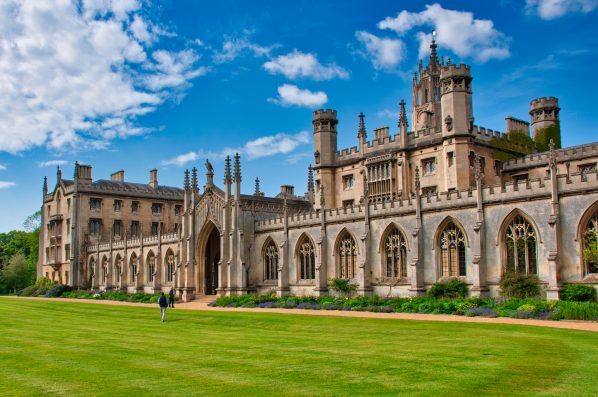Archeologists In England Recently Analyzed The Remains Of Over 400 People From A Medieval Cemetery And Uncovered Evidence Of A Social Benefits System That Helped People For Hundreds Of Years

Today, we have many public assistance programs for families and individuals in need of cash or benefits. But even long ago, in the communities of premodern rural England, social welfare systems that provided support for the sick and the poor were in place.
Archaeologists from the University of Leicester analyzed the remains of over 400 people from a medieval cemetery at the hospital of St. John the Evangelist in Cambridge and found that there was evidence of a social benefits system that functioned for hundreds of years.
The hospital was constructed in 1195 with the aim of providing housing and medical care for the “poor and infirm.” The institution remained open until 1511 when it was replaced by St. John’s College.
The skeletal remains from the cemetery were first excavated in 2010. The archaeologists from the University of Leicester set out to examine the bones through a combination of physical, isotopic, and genetic studies. As a result, they managed to gain insight into how the medieval benefits system operated and what kinds of people were helped.
“We know that lepers, pregnant women, and the insane were prohibited, while piety was a must,” said John Robb, a professor at the University of Leicester. The inmates accepted into the hospital were required to pray for the souls of the people who funded the hospital.
Experts discovered that the inmates buried at the cemetery were an inch shorter than the townspeople. Their bones also revealed that they had suffered from malnutrition and disease during childhood. However, they showed lower incidences of bodily trauma, suggesting that they were not exposed to as much harm or hardship while in the hospital’s care.
Some of the bodies unburied in the cemetery were children. The children were small for their age and lagged about five years behind in height, which led to the conclusion that they were orphans.
In addition to the impoverished residents, archaeologists identified several skeletons that belonged to scholars from the University of Cambridge. The bones of these individuals were in good condition, indicating that they were well-fed and did not participate in manual labor throughout their lives.
Furthermore, the researchers also discovered eight hospital residents whose health had been good during their youth but seemed to decline in older age. It was believed that these particular individuals were examples of the “shame-faced poor,” a term used to describe those who were once prosperous but had descended into poverty, possibly because they were no longer capable of working.

Scott – stock.adobe.com – illustrative purposes only
The findings from the study demonstrate that the hospital took in people from diverse backgrounds, which explains how it was able to thrive for three centuries.
“This not only fulfilled their statutory mission but also provided cases to appeal to a range of donors and their emotions: pity aroused by poor and sick orphans, the spiritual benefit to benefactors of supporting pious scholars, reassurance that there was restorative help when prosperous, upstanding individuals, similar to the donor, suffered misfortune,” stated the study’s authors.
Sign up for Chip Chick’s newsletter and get stories like this delivered to your inbox.
More About:News





